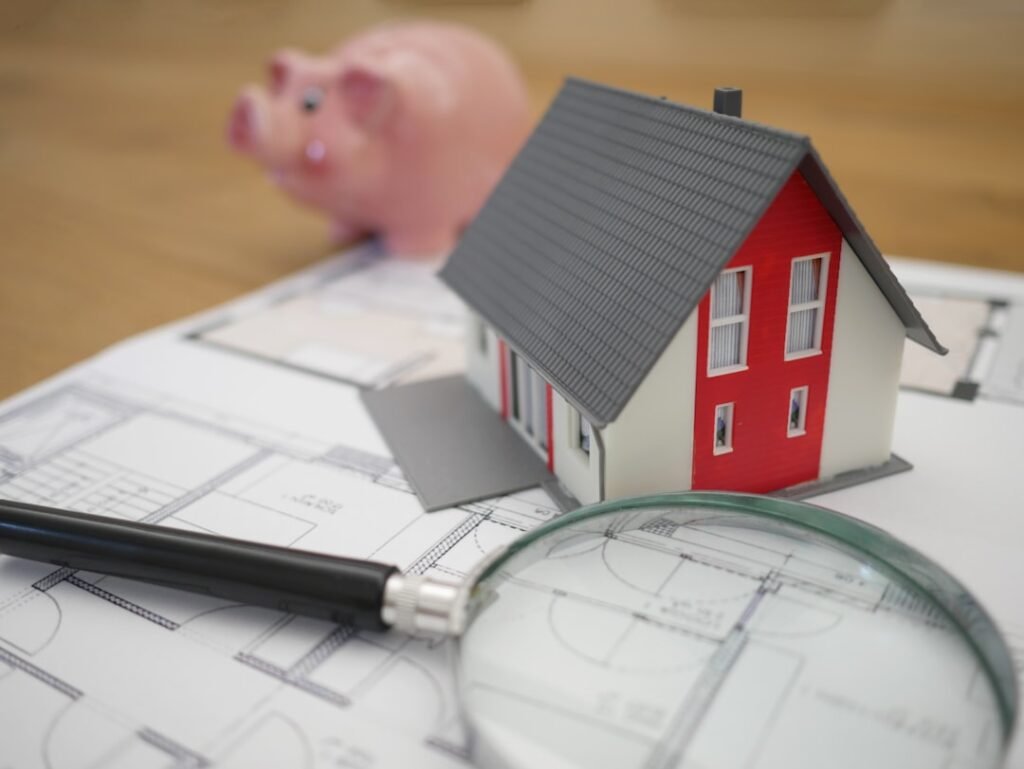
Table of Contents
Introduction to Property Deal Analysis
Understanding the intricacies of property deal analysis is vital for any real estate investor. Analyzing property deals is not just a task; it is a crucial step that can significantly impact your investment’s profitability. By conducting thorough analyses, investors can make informed decisions, minimize risks, and capitalize on lucrative opportunities. The real estate market is dynamic, and a well-analyzed deal can mean the difference between success and failure.
The process of property deal analysis involves several key steps. Initially, investors must locate potential properties through various channels. This includes utilizing the Multiple Listing Service (MLS), networking with wholesalers, participating in auctions, and exploring off-market deals. Each of these channels offers unique opportunities and requires a discerning eye to identify the best prospects.
Once potential properties are identified, the next phase is to evaluate their value accurately. This involves understanding market trends, neighborhood dynamics, and property condition. Following valuation, investors must calculate the After Repair Value (ARV), estimate repair costs, and assess the potential cash flow. These calculations are essential for determining whether a deal is financially viable.
With the right tools and a disciplined approach, property deal analysis can become a streamlined process. As we delve deeper into each aspect of analyzing property deals, you will discover the secrets of effective property deal analysis while using techniques and strategies that will empower you to make sound investment decisions. This foundational understanding sets the stage for a more in-depth exploration of locating properties and evaluating their true worth.
Locating Properties
Multiple Listing Service (MLS)
The Multiple Listing Service (MLS) is a vital tool in real estate, serving as a comprehensive database where licensed agents can list and access properties for sale. With over 800 MLSs across the United States, this system enhances cooperation among agents, providing maximum exposure for sellers and a wide range of options for buyers. Access is exclusive to licensed professionals, ensuring reliable and up-to-date listings.
Wholesalers
Real estate wholesalers play a unique role in the market. They locate properties at a discount and sell the purchase contracts to investors, often without having to buy the property themselves. This method can yield great deals but comes with challenges, such as limited flexibility on terms and properties sold in as-is condition. Networking at local meetups and online searches can help find reputable wholesalers.
Auctions
Buying properties at auctions offers another avenue for locating potential deals. Properties are typically auctioned due to foreclosure or tax default, providing opportunities for lower prices. Auctions can take various forms, such as absolute or minimum bid auctions, and can be conducted in-person or online. However, buyers should be prepared for the risks of purchasing properties as-is, often without inspections.
Off-Market Deals
Exploring off-market deals can be a lucrative strategy, as these properties may not yet be listed publicly. Networking, direct mail campaigns, or leveraging social media can uncover these hidden gems. Off-market transactions often lead to less competition and potentially better prices, making them an appealing option for savvy investors.

Evaluating Property Value
Accurate property valuation is a cornerstone of successful real estate investment. Knowing a property’s true value is essential for making informed decisions, whether you are buying, selling, or investing. In today’s volatile market, understanding property values can protect you from overpaying and ensures you have adequate insurance coverage. With the increasing frequency of natural disasters and skyrocketing replacement costs, having a precise valuation is more critical than ever.
Several methods exist to determine property value, each with its distinct advantages. The Sales Comparison Approach evaluates a property by comparing it to similar properties that have recently sold in the same area. This approach is particularly effective for residential properties, providing a clear market value based on actual sales data.
The Cost Approach Appraisal estimates a property’s value by calculating the cost to replace or reproduce it, minus depreciation. This method is often used for new constructions or unique properties lacking comparable sales data.
For income-generating properties, the Income Approach Appraisal is a vital tool. It calculates value based on the present value of expected future cash flows, making it ideal for rental units and commercial buildings. Additionally, the Price Per Square Foot method offers a straightforward way to assess property value based on size, although it may not account for unique features.
Understanding these valuation methods allows investors to ensure that the price they are willing to pay aligns with the property’s actual value, ultimately aiding in making informed investment decisions.
Calculating After Repair Value (ARV)
The After Repair Value (ARV) is the estimated value of a property once renovations have been completed, rather than its current condition. This metric is crucial for real estate investors and house flippers as it helps assess the potential future value of a property following necessary upgrades and repairs. Understanding ARV allows investors to determine a fair purchase price for a fixer-upper, ensuring they can secure financing for renovations while positioning themselves for profitability upon resale. Moreover, lenders often base financing on a percentage of the ARV, typically around 75%, making it a key figure in the investment process. For more information on ARV, visit Rocket Mortgage.
Calculating ARV involves several clear steps:
- Identify Comparable Properties (Comps): Select 3-6 properties that closely resemble the investment property in square footage and features. Ideally, these comps should be located within one mile and have sold within the last six months.
- Calculate Average Price Per Square Foot: Determine the average price per square foot of the identified comps.
- Calculate ARV: Use the formula: ARV = Average Cost Per Square Foot of Comparable Properties * Square Footage of Investment Property. For instance, if the average price per square foot is $161 and the investment property is 1,440 square feet, the calculation would be: ARV = $161 * 1,440 = $232,046.
- Use the 70% Rule: This optional step helps determine the maximum purchase price. The formula is: Maximum Purchase Price = ARV * 70% – Estimated Repair Costs. For example, if the ARV is $232,046 and the expected renovation costs are $31,500, then the maximum price would be: $232,046 * 0.7 – $31,500 = $130,932. For a detailed guide on calculating ARV, check out New Silver.
These steps provide a systematic approach for investors to estimate a property’s value post-repairs, ensuring they make informed investment decisions.
Estimating Repair Costs
Accurate estimation of repair costs is vital for real estate investors. It can significantly influence offer prices and overall deal outcomes. Several key factors affect these costs, starting with the current condition of your property. Older properties or those that lack regular maintenance often require more extensive repairs, leading to elevated costs. Additionally, environmental and weather conditions play a role; properties in areas with extreme weather may incur higher maintenance expenses due to increased wear and tear.
The quality of materials used in construction also impacts repair costs. High-quality materials typically require less frequent repairs, while lower-quality options can lead to more significant expenses. The extent of residency and usage is another factor: properties in densely populated areas may suffer more damage, while less-used properties generally have lower maintenance costs.
Estimating repair costs can be approached through various methods. One effective technique involves analyzing comparable properties (comps) recently sold in the neighborhood. Look for properties with similar characteristics and compare their sale prices. Next, create a repair list of necessary improvements, such as painting or replacing flooring. Online repair estimate calculators like HomeAdvisor or HomeWyse can help estimate costs for each item on your list.
For instance, if a leaky roof requires repairs, costs can range from $200 for minor fixes to $2,000 for major repairs. By systematically assessing these factors and utilizing digital tools, investors can develop a more accurate understanding of potential repair costs and ensure profitable decisions.
Assessing Cash Flow
Understanding cash flow is crucial for successful property investment. Cash flow is the net income generated by a property, calculated by subtracting operating expenses and financing costs from gross rental income. The components of cash flow include several key elements that investors must consider.
Firstly, Gross Rental Income represents the total potential income from rent payments. It’s advisable to thoroughly research the local rental market to establish realistic income expectations. Next, Operating Expenses encompass all costs related to managing the property, such as mortgage payments, property taxes, insurance, and maintenance costs. Additionally, Capital Expenditures (CapEx) are significant one-time costs for major repairs or upgrades that should not be overlooked. For a detailed breakdown of these expenses, refer to this resource.
Moreover, the Net Operating Income (NOI) is a vital metric, calculated by subtracting operating expenses from gross rental income. This figure provides a snapshot of profitability before considering financing costs. The ultimate measure, Cash Flow, is determined by deducting debt service from NOI. Positive cash flow indicates the property generates more income than it costs to operate, suggesting a solid investment opportunity.
The importance of analyzing cash flow cannot be overstated. A steady income stream allows investors to cover expenses and make mortgage payments without being solely dependent on market fluctuations. Furthermore, maintaining a healthy cash flow serves as a buffer against unexpected costs, such as repairs or vacancies. Over time, properties that generate positive cash flow can appreciate in value, contributing to long-term wealth accumulation and providing paths to financial independence. For more insights on why cash flow analysis is vital, check out this article. By regularly reviewing and adjusting cash flow calculations, investors can make informed decisions and strategize effectively for future investments.
Tools and Software for Analysis
In today’s competitive real estate market, utilizing effective property analysis tools is crucial for making informed investment decisions. Several software solutions stand out for their capabilities in evaluating potential deals.
Among the popular tools are:
- Property Evaluator: Ideal for Apple users, this tool assesses investment properties using key financial metrics like cash flow and ROI. It offers a free iOS version, while the Mac version is available for $49.
- RealData: This comprehensive platform provides various analysis modules and calculators, with pricing starting as low as $85 for a 30-day license.
- RealNex: An all-in-one investment software that combines property analysis features with marketing tools, starting at $169 per month.
- TheAnalyst PRO: Focused on commercial real estate, this software costs $599 per year and offers detailed investment reports.
- Zilculator: This tool automates property analysis reports, integrating data from multiple sources for informed decision-making, with plans starting from $13.60 monthly.
- FlipperForce: Designed for developers, it assists in deal analysis and budget management, with subscriptions ranging from $79 to $499 monthly.
The advantages of using these tools are manifold. They streamline operations, allowing real estate professionals to automate tasks and reduce administrative burdens. This increased efficiency enables agents to focus on high-value activities and manage more clients effectively.
Furthermore, software enhances financial tracking and reporting, providing insights into financial health that help in making strategic decisions. Centralized document management simplifies contract handling, while advanced technologies like AI and ML offer predictive analytics, identifying investment opportunities with greater accuracy.
By integrating these tools into their workflows, investors can significantly enhance their property deal analysis, ensuring informed decisions that lead to successful outcomes.
Frequently Asked Questions
Understanding property deal analysis can be complex, leading to many common queries among real estate investors. Here are some frequently asked questions along with clear, concise answers.
Q: What is property deal analysis? A: Property deal analysis involves evaluating the potential value and profitability of real estate investments. This includes assessing property conditions, calculating costs, and estimating future returns.
Q: Why is property deal analysis important? A: Analyzing property deals is crucial for making informed investment decisions. It helps identify profitable opportunities, reduces investment risks, and ensures that resources are allocated wisely.
Q: What tools can I use for property analysis? A: Several software tools can facilitate property analysis, such as Property Evaluator for Apple users, RealData, and RealNex. Each offers unique features tailored to different aspects of property evaluation.
Q: How do I estimate repair costs? A: Repair costs can be estimated by considering factors such as the property’s age, condition, and necessary upgrades. Tools like FlipperForce can assist in tracking expenses and organizing renovation schedules.
Q: What is the After Repair Value (ARV)? A: The ARV is the estimated value of a property after renovations are completed. It’s essential for understanding potential returns on investment and can be calculated by comparing similar properties in the area.
Q: How can I assess cash flow? A: Cash flow is assessed by evaluating income from rent against expenses like mortgage payments, property taxes, and maintenance costs. This analysis helps determine the profitability of an investment.
By addressing these common questions, investors can navigate the complexities of property deal analysis more effectively, leading to smarter investment choices.
The Role of Data and Statistics
In the realm of property deal analysis, data serves as the backbone of informed decision-making. Accurate data enables investors to assess potential properties thoroughly and identify viable investment opportunities. By leveraging statistical insights, investors can reduce risks and enhance the likelihood of profitable outcomes.
One of the key reasons data is crucial in property analysis is its ability to highlight trends and inform strategies. For instance, historical sales data can reveal market conditions, allowing investors to gauge property appreciation over time. Additionally, understanding rental trends in a specific area helps investors determine potential cash flow and occupancy rates.
Several types of data are particularly useful in guiding investment decisions. Market comparables, or comps, provide insights into similar properties’ selling prices, enabling investors to evaluate whether a property is priced appropriately. Another vital data point is the After Repair Value (ARV), which estimates a property’s worth after renovations. This figure can be crucial when determining if a property will yield a profitable return post-improvement.
Moreover, demographic data, such as population growth and income levels, can indicate a location’s long-term viability. Access to tools like PropStream can provide comprehensive data on neighborhoods, aiding in strategic decision-making.
In summary, harnessing accurate data and statistics is essential for effective property deal analysis. By understanding market dynamics and leveraging the right tools, investors can make decisions that align with their financial goals.

Conclusion
Throughout this article, we have explored the essential components of effective property deal analysis. We began by emphasizing the importance of analyzing property deals to ensure informed investment decisions. The process of locating properties through various channels, such as the Multiple Listing Service (MLS), wholesalers, and auctions, was discussed in detail. Each avenue presents unique opportunities and challenges that investors must navigate.
Next, we delved into crucial aspects like evaluating property value, calculating the After Repair Value (ARV), and estimating repair costs. Each of these factors plays a vital role in determining whether a property is a worthwhile investment. Additionally, we examined the significance of assessing cash flow, which ultimately impacts the long-term profitability of an investment.
To enhance the efficiency of property analysis, we highlighted several popular tools and software solutions tailored for real estate investors. Solutions like Property Evaluator, RealData, and RealNex can streamline operations and provide valuable insights. Utilizing these tools not only simplifies the analytical process but also improves communication with clients and aids in better financial management.
In conclusion, thorough property deal analysis is crucial for maximizing investment success. By leveraging accurate data, employing effective tools, and maintaining a keen understanding of market dynamics, investors can make sound decisions that pave the way for profitable real estate ventures.
Join the Realty Banker Network and network and grow with us. Connect with us on
Youtube, Facebook, Instagram and Twitter. We hope to see you soon!


